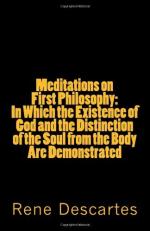From the top of that precious fabric we have described hang the two arms, which are terminated by the hands, and which bear a perfect symmetry one with another. The arms are knit with the shoulders in such a manner that they have a free motion, in that joint. They are besides divided at the elbow and at the wrist that they may fold, bend, and turn with quickness. The arms are of a just length to reach all the parts of the body. They are nervous and full of muscles, that they may, as well as the back, be often in action and sustain the greatest fatigue of all the body. The hands are a contexture of nerves and little bones set one within another in such a manner that they have all the strength and suppleness necessary to feel the neighbouring bodies, to seize on them, hold them fast, throw them, draw them to one, push them off, disentangle them, and untie them one from another.
The fingers, the ends of which are armed with nails, are by the delicacy and variety of their motions contrived to exercise the most curious and marvellous arts. The arms and hands serve also, according as they are either extended, folded, or turned, to poise the body in such a manner as that it may stoop without any danger of falling. The whole machine has, besides, independently from all after-thoughts, a kind of spring that poises it on a sudden and makes it find the equilibrium in all its different postures and positions.
Sect. XXXVIII. Of the Neck and Head.
Above the body rises the neck, which is either firm or flexible at pleasure. Must a man bear a heavy burden on his head? This neck becomes as stiff as if it were made up of one single bone. Has he a mind to bow or turn his head? The neck bends every way as if all its bones were disjointed. This neck, a little raised above the shoulders, bears up with ease the head, which over-rules and governs the whole body. If it were less big it would bear no proportion with the rest of the machine; and if it were bigger it would not only be disproportioned and deformed, but, besides, its weight would both crush the neck and put man in danger of falling on the side it should lean a little too much. This head, fortified on all sides by very thick and very hard bones in order the better to preserve the precious treasure it encloses, is jointed with the vertebrae of the neck, and has a very quick communication with all the other parts of the body. It contains the brain, whose moist, soft, and spongy substance is made up of tender filaments or threads woven together; this is the centre of all the wonders we shall speak of afterwards. The skull is regularly perforated, or bored, with exact proportion, and symmetry, for, the two eyes, the two ears, the mouth, and the nostrils. There are nerves destined for sensations, that exercise and play in most of those pipes. The nose, which has no nerves for its sensation, has a cribriform, or spongy bone, to let odours pass on to the brain.




